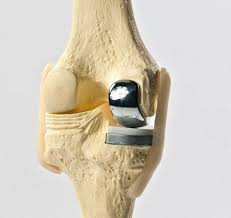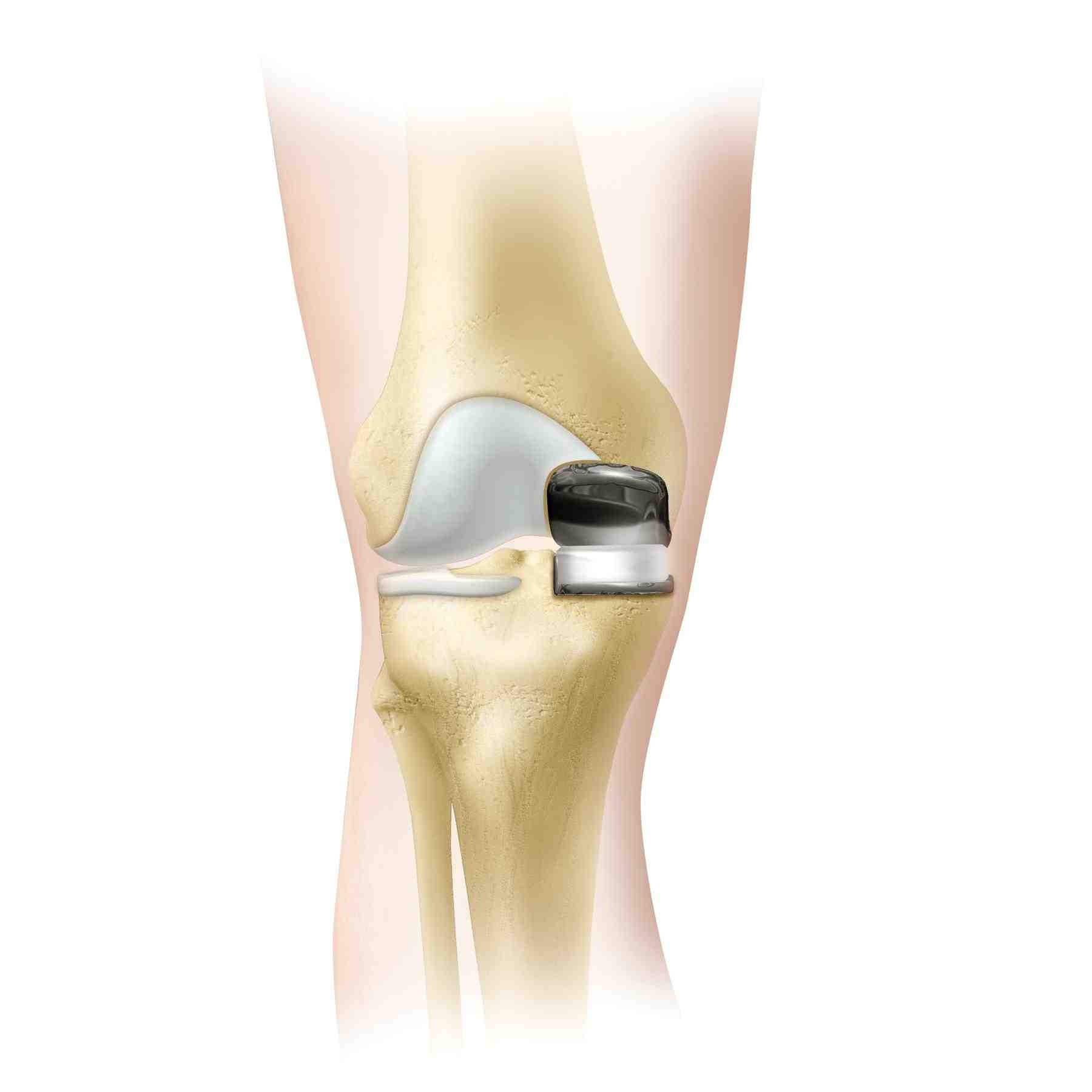Knee osteoarthritis sometimes only occurs on the medial side of the joint (the side closest to your other knee). In knees that are otherwise healthy, partial knee replacement can preserve the healthy bone, cartilage and ligaments. Because the Partial Knee is designed to repair only one side of the knee, it’s much smaller than a total knee implant.
Other advantages of a partial knee include less pain, a faster recovery, and more natural motion.
And thanks to its unique mobile bearing design, the Partial Knee is the only one of its kind in the U.S. Research has shown that partial knee replacements with moveable plastic bearings like the Oxford® have low wear rates.
More natural motion In a healthy knee, the meniscus serves as a shock absorber between the ends of the bones. The Partial Knee is the first partial implant with an artificial meniscal bearing designed to glide freely throughout the knee’s range of motion, more closely replicating normal movement. The free-floating nature of the device potentially provides for a more natural motion.
New research reports that Oxford®Partial Knee patients are more likely than total knee patients to be satisfied with their ability to perform activities of daily living, and to report that their knee replacement “felt normal.”
Patients receiving the Partial Knee at a minimum of one year post-operation were 1.81 times more likely than total knee replacement recipients to report that their knee felt normal. 2.69 times more likely to be satisfied with their ability to perform activities of daily living.
The Partial Knee is the most widely used and clinically proven partial knee in the world. Published long-term clinical results on the Oxford®Partial Knee demonstrated a 92.4% survivorship at 10 years, 94.0% at 15 years, 91% at 20 years, proving The Oxford®Partial Knee the most widely used and clinically proven partial knee in the world.
There is no guarantee that any implant will successfully function for a specific length of time, as there are a multitude of variables that affect the life of an implant.
Not all patients are candidates for Partial Knee replacement. You should discuss your condition and treatment options with your surgeon.
The knee is composed of three separate compartments. Osteoarthritis sometimes develops in only one compartment of the knee, while the other two compartments remain relatively healthy.
Patients who have osteoarthritis in only one compartment may be candidates for partial knee replacement.
The advantage of a partial knee is that it resurfaces only the damaged cartilage of the knee, preserving the undamaged cartilage. You and your surgeon will determine if a partial knee is appropriate for you.
What to expect before surgery ?
If you’re a candidate for the Partial Knee with Signature™ technology, your preoperative experience will be similar to most partial knee patients, except an MRI of your affected leg will also be required. The typical MRI scan will last approximately 20 minutes. The scan will only be performed on the hip, knee and ankle, so your head will remain outside of the machine. The MRI is used for preoperative planning by your surgeon and for the design and manufacture of the Signature™ personalized positioning guides that will be used during your partial knee replacement.
After surgery
After surgery, you will probably be hospitalized for one to three days. Recovery time varies, but most people are able to drive after two weeks, garden after three to four weeks, and golf after six to eight weeks. Your surgeon will tell you when and what activities you can return to and what activities to avoid.
 Drlogy
Drlogy













